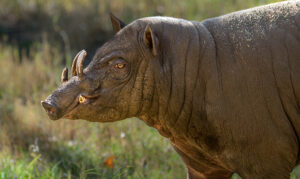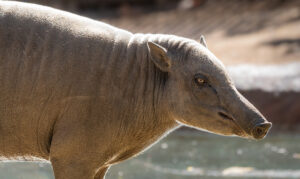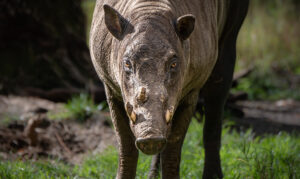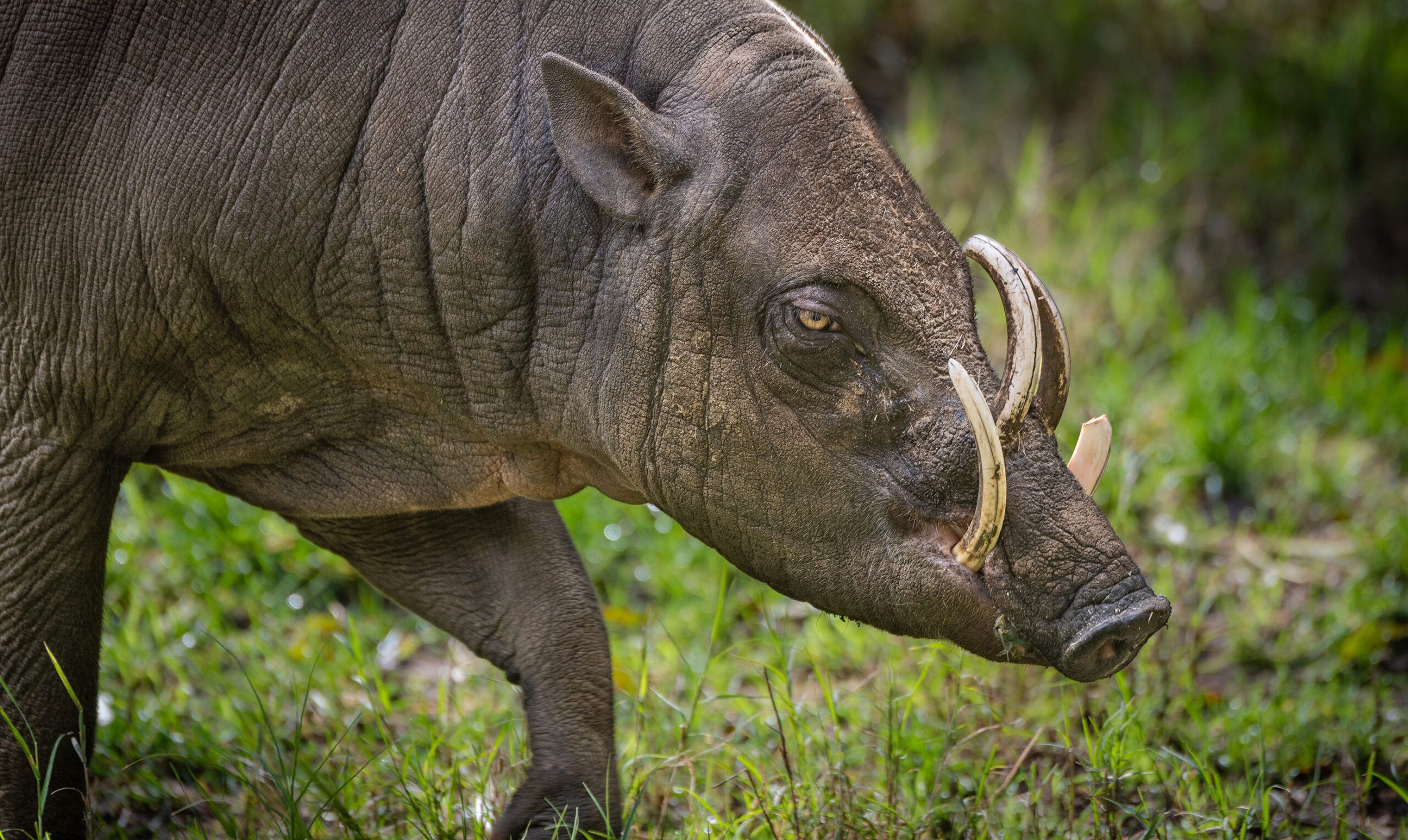About
The babirusa is a wild, naked-looking pig that is native to the Indonesian archipelago. Male babirusas (boars) are known for their bizarre tusks, which, if they are not worn down or broken in combat, will eventually grow long enough to pierce the animal’s skull. Females (sows) have small tusks or no tusks at all. ”Babirusa” is Malay for “hog deer,” a name that arose from the resemblance their tusks bear to antlers.
Although the males’ massive tusks are intimidating, they are brittle and break easily. They are not used as weapons, but instead to shield the boar’s eyes during fights. Dagger-like lower tusks are used to ward off rivals. If lower tusks become dull, the boar sharpens them by rubbing them against trees. When males fight over mates or territory, they stand side by side and push each other with their shoulders. They may rear up on their hind legs and box with one another using their front hooves. Adult babirusas have few, if any, natural predators.
Like all pigs, babirusas are excellent swimmers, preferring to live near bodies of water. They have been known to travel across wide rivers and seas to reach small islands. Babirusas are among the fastest runners in the pig family and may reach speeds of 30 miles per hour—as fast as a deer. Males tend to be solitary or live in bachelor groups. Females form groups of up to eight individuals with their young. They spend much of the day foraging through the forest, stopping to wallow in mud, which helps protect them from heat and rid them of parasites. Unlike most pigs, babirusas rarely use their snouts to root for food. They instead use their strong hooves to dig for roots and search for insect larvae in rotting trees. The L.A. Zoo first acquired a pair of babirusa from Europe in 1984. The wild babirusa population is estimated at fewer than 10,000 individuals. Threats include hunting and habitat destruction due to deforestation and mining.



Status
The babirusa population is extremely vulnerable and has been decimated by hunting and habitat destruction.
Habitat
Babirusas live in the Indonesian archipelago, primarily on the island of Sulawesi. They can be found in moist, swampy forests and in the lush thickets of tropical rainforests.
Diet
Babirusas are omnivorous, but mostly prefer to dine on leaves, fruits, and berries. They will also eat insects and carrion.
Physical Characteristics
You won’t see these massive pigs on any farm! The male (boar) stands up to two and a half feet tall from the shoulder and can weigh as much as 220 pounds. The female (sow) is slightly smaller. They have slender snouts and thick, wrinkled gray-brown skin that is sparsely covered in bristly hair. Like many pigs, the male babirusa has canine teeth that continually grow and eventually point upwards into tusks. Their lower teeth grow up and out over the edge of the lip. At six months old, these teeth rotate 180 degrees and begin to grow up and into the top of the nasal rostrum. These curved teeth can reach a remarkable length of 17 inches, and, in unfortunate cases, can arch so severely that they eventually pierce the animal’s forehead. The female has smaller tusks or in some cases, none at all. Lifespan is 10 to 24 years.
LOCATION WITHIN THE ZOO
You can find this animal in the “Animals of the Drylands” section. See Zoo Map.

